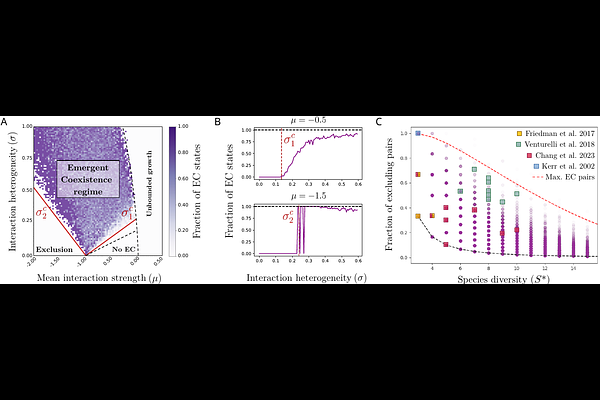Emergent coexistence and the limits of reductionism in ecological communities

Emergent coexistence and the limits of reductionism in ecological communities
Aguade-Gorgorio, G.; Kefi, S.
AbstractUnderstanding if pairwise interactions explain the species composition of communities is a central goal in ecology. This question has been challenged by the observation of emergent coexistence, where microbial communities contain species that cannot coexist in pairs, suggesting the presence of non-pairwise mechanisms. Instead, we show that emergent coexistence arises naturally in species-rich models with pairwise interactions. Strikingly, this phenomenon does not require additional mechanisms like intransitive or higher-order interactions; rather, coexistence arises from dense networks of indirect effects. As diversity increases, we show that indirect effects become so intricate that pairwise interactions no longer predict community composition, revealing a fundamental limit to reductionist explanations of coexistence. Like chaos emerging from simple rules, our findings provide theoretical foundations to understand how unexpected species coexistence can emerge from pairwise interactions.